Trade Like a Casino: Find Your Edge, Manage Risk, and Win Like the House
$26.65
| Author(s) | |
|---|---|
| Pages |
286 |
| Format |
|
| Publication Year |
2011 |
With Trade Like a Casino, you’ll gain the knowledge needed to excel at this challenging endeavor. Engaging and informative, this reliable guide identifies and explains the key techniques and mental processes characteristic of successful traders. It reveals that successful traders operate very much like a casino in that they develop a method that gives them “positive expectancy” and they unflappably implement the method in the face of changing, and oftentimes volatile, market conditions. Page by page, the book explores the intricacies of methodology, mental control, and flexibility that allow traders to develop and maintain the casino-like edge.
Introduction:
This book progresses in a linear fashion from basic, rudimentary concepts to those of greater complexity. Chapter 1 explores the casino paradigm of trading with respect to the development of positive expectancy models in exhaustive detail. Chapter 2 examines the casino paradigm of trading as it relates to price risk management.
Chapter 3 concludes our introduction to the casino paradigm with an in-depth exposition of trader discipline. Chapter 4 explores the best-kept secret in trading, the cyclical nature of volatility. Chapter 5 looks at a problem that can undermine even the most robust of positive expectancy trading models. Chapter 6 focuses on different techniques to minimize emotions of regret. Chapter 7 discusses the importance of timeframe analysis.
Chapter 8 examines a wide array of positive expectancy trendfollowing and mean reversion trading models. points taken in the direction of the longer-term trend. Chapter 9 introduces the reader to another psychological trap that can derail positive expectancy trading models. Chapter 10 examines common trading pitfalls and how to transcend them. Chapter 11 offers a wide variety of techniques for analyzing and improving trader performance. Chapter 12 explores the psychological mindset required to succeed with a positive expectancy model.
Contents:
- Developing Positive Expectancy Models
- Price Risk Management Methodologies
- Maintaining Unwavering Discipline
- Capitalizing on the Cyclical Nature of Volatility
- Trading the Markets and Not the Money
- Minimizing Trader Regret
- Timeframe Analysis
- How to Use Trading Models
- Anticipating the Signal
- Transcending Common Trading Pitfalls
- Analyzing Performance
- Becoming an Even-Tempered Trader
Trade Like a Casino: Find Your Edge, Manage Risk, and Win Like the House By Richard L. Weissman pdf
24 reviews for Trade Like a Casino: Find Your Edge, Manage Risk, and Win Like the House
Clear filtersOnly logged in customers who have purchased this product may leave a review.

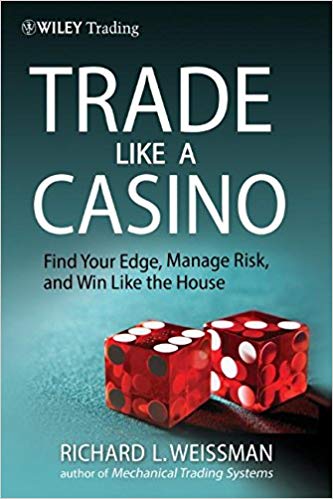

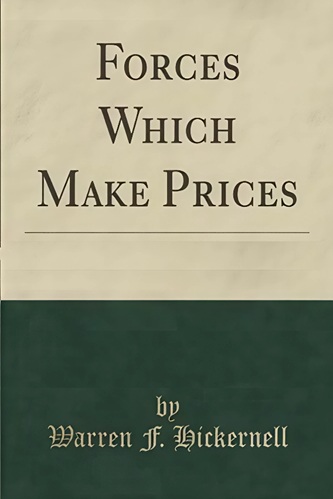
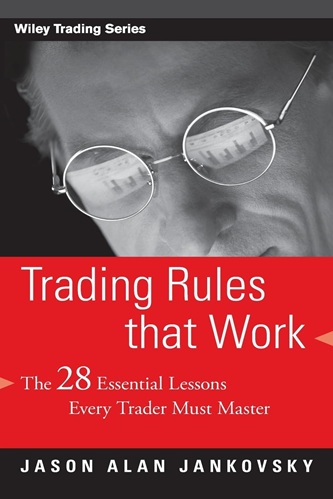
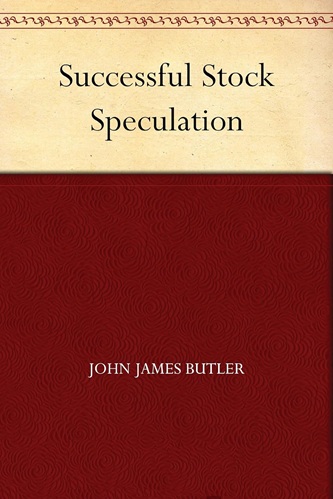
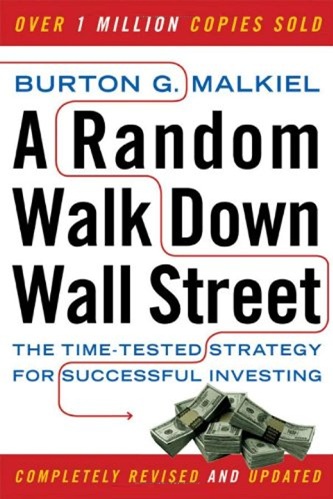
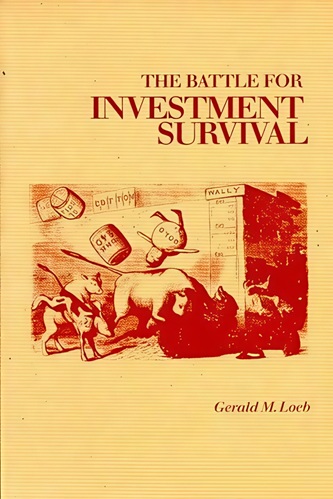
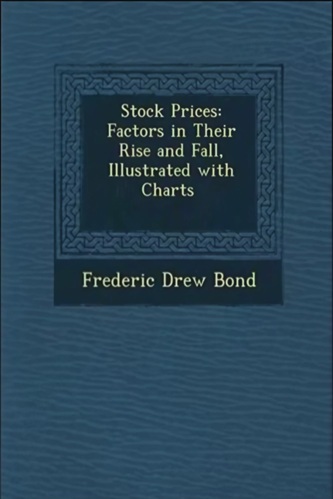
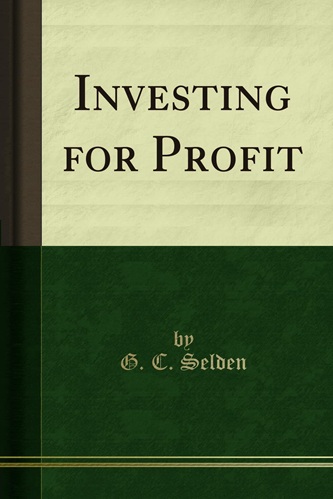
Zachary Cannon (verified owner) –
This book is a gem! Well written, covering a wide arrange of topics and with lots of different examples, including actual trading systems with robust metrics. I don’t trade mechanical systems myself but still found a lot of great pearls of wisdom in this book. If you are serious about trading, you need to read this book.
Averie Tran (verified owner) –
5 starts for sure. This book is great in that it not only talks about finding your edge/system, but actually GIVES you several basic systems to start with and gives you ideas in how to tweak/modify and make them your own! It also gives you the coding for these systems as well. Almost all trading books give tell you that you need an edge/system with good expectancy. This is one of the few that actually shows you HOW. There is lots about risk management, trader psychology also to help you stick to the system in good times and bad times (more important). Either way, this book is exactly what I was looking for in order to create my own system.
Dash Bridges (verified owner) –
There has been no book written which is superior to this, in terms of insight into the mind’s nature during the trading process. Invaluable. I cannot recommend it highly enough. In fact, it is much more than a trading book. It is a work of spiritual literature.
Willa Crosby (verified owner) –
This book helps Traders to straighten their thinking, to make their head straight in the markets and overcome their destructive tendencies by keeping them under constant check and control.
Really helpful , every trader involved in real trading must adapt to the casino paradigm or else your are lost.
Elora Arias (verified owner) –
I am currently rereading Richards book again because it is jam packed with great material. This book gives traders the tools to mentally mold and sharpen their trading skills. Richard, a veteran floor trader has taken his experience from his floor days and from when he switched to screen trading to create a book that addresses Four key elements of trading: discipline, risk management, a proven trading system and controlling emotions. The book is able to show you how each one of these four elements, when combined are the foundation of a successful trader that will yield great results and a powerful advantage. This book has helped me tremendously with my risk management skills, becoming more disciplined in my trading ( trade setup and execution) and taking the emotion out of trading. I highly recommend this book and think that it should be a must have for traders library.
Santos Combs (verified owner) –
What an amazing book this is.
Its not a fancy book, which makes tall claims like making millions in the market or getting rich quick. It is a book which shows you the clarity, this is the book which helps you see markets clearly.
Just as the title suggests, it encourages you to find your edge, encourages you to find positive expectancy trades in your trading, It talks about managing risk at all stages and all this is in very simple easy to understand language. English is not my first language still I was able to understand every bit of it.
Icing on the cake is, this book gives you some practical and implement able trading systems ready made. Just make some changes in those systems as per your markets and requirements and u have winning systems in hand.
Another topic that i havent found on several other books is to trade various instruments at the same time to minimise risk.
To me this is one of the best if not the best trading books that i have read so far.
Braxton Estrada (verified owner) –
This book has everything needed to succeed as a professional trader – profitable trading methods (I particularly liked the chapters on timeframe divergence techniques and the cyclical nature of volatility), comprehensive risk management tools like the risk management pyramid, and the most comprehensive examination of tools to instill trading discipline I’ve ever read (this section absolutely blew me away —- the author presents you with a detailed outline for a journal that really forced me to analyze my trading decisions and, more importantly to eradicate irrational ways of behaving in the markets).
Despite being a professional with over twenty-five years experience this book allowed me to think about markets in new ways and has enhanced overall performance (especially the chapter on minimizing trader regret).
Stated simply… buy it.
Sawyer Avila (verified owner) –
Trading books are known for being a conundrum, an author uses them to spread the message of “do what I say, not what I do”. Not this book. This book has been a sort of bedrock to the foundation of my trading. The author’s thought process was very helpful in guiding me to develop reliable trading models.
Chapter 1 is obviously an important chapter, positive expectancy is the one thing a trader needs to exist. If you lack this characteristic you will lose all of your money.
Chapter 4 was one of the most important chapters I have read in my life. I use the contents of chapter 4 in all of my trading models. I had done some research on the cyclical nature of volatility before reading this book, but that chapter really brought it home as to how to use it.
Lastly chapter 11 is the reason to buy the book. Read the questions, answer the questions, write the answers down and I think you will be well on your way to formulating a winning trading strategy.
If you are a beginner or an intermediate-level trader you would benefit from adding this book to your library. Perhaps if you are a beginner, familiarizing yourself with technical analysis would be helpful before reading. As a professional, I think chapter 11 would be worth the purchase of the book as it may allow you to refine your objectives and goals through a refined trading plan.
Linda Goodwin (verified owner) –
It simply reads like an average trading book heavy on trading psychology and superficial on trading systems and techniques I bet that anyone who had read over 3 trading books would be disappointed.
p.s. Below please find some favorite passages of mine fyi.
If it feels good, don’t do it. Markets can do only two things, either trade in a range or trend, and volatility indicators can be used to clue you in to which kind of behavior the market is currently exhibiting. Whey then do almost all speculators lose money? They lose because successful speculation requires that we consistently do that which is psychologically uncomfortable and unnatural.
Do you want to understand all the intricate reasons behind the moves or do you want to make the money? Nobody can know all the reasons. Forget the reasons, just make the money.
What does a man do when he sets out to make the stock market pay for a sudden need? He merely hopes. He gambles. He therefore runs much greater risks than he would if he were speculating intelligently. – Edwin Lefevre
We always think about the money instead of market dynamics (that we trade our equity instead of the market).
If we made money, it is because we were in sync with the multifaceted nature of markets. If we lost, we were not.
Alec Knapp (verified owner) –
I’ve read many/most of the big name trading books and this has been my favorite thus far. It has came to me at the perfect time it seems.
-Trade like a Casino opens up introducing you to what Richard calls the “Casino paradigm” in which casinos trust in their ability to win over the long run. This in-turn brings emotions out of the game and walks the reader into the statistical algorithmic side of trading. He touches upon market efficiency (or should I say inefficiency) theory, trading psychology lures that destroy traders, and the name of the game- winning like the house. It covers the ground works thoroughly of risk management & discipline. Individual trader psychology is matched with different types of systems.
-We learn one of the industry’s best kept technical analyst’s best kept secrets-the cyclical nature of volatility. It has opened my eyes into a new paradigm of looking at charts. I gained a much fuller view from that one chapter alone. Techniques are introduced to minimize risk-induced anxiety and mechanical coping mechanisms. Pros/Cons of the different trading styles. Technical time frame analysis. Various “throw away models” he calls them, despite being positive expectancy system bases for building. Discretionary traders are show how to incorporate mechanical rules into their systems. And, all of this is accompanied with charts. It makes all the mechanics/technicals crystal clear, right infront of your face.
-The last third of the book covers psychology analyzing market behavior and common pitfalls of traders. We are provided with an in-depth questionnaire that really makes you objectively state/think about topics from being a trader, performance, methods, risk management, execution, and R & D. Really top notch. Would serve as an excellent check list for any level of trader. We’re shown a full length outline and sectional breakdown of a trading journal for tracking monthly performance, multi-month, asset records, trading models, and summary totals. I found a few holes in my own personal journal that I will be plugging. The last chapter was absolutely enjoyable! Even-mindedness and a bit of eastern philosophy is introduced and compares this with trading from fear, hope, paralysis, and recklessness. Three levels of traders are given, with the stages of mindset and psychology that we pass through to reach ultimately the Master level. Ultimately we must reprogram ourselves. Loved these topics- Flexibility & creativity, meditation technique, visualization, even somatic exercise. Really great stuff. Traders need to open their mind past the charts, understand what this can do, and become more complete. Loved it. The reader also learns a little bit about Richard, which I found myself having striking similarities with in goals part. Where his trading started, like everyone, for money ultimately leading him to the enemy- emotionalism, and ways to control his emotions/psychology through techniques in trading (mechanics) and outside of trading which ultimately connect.
-This isnt a book about programming and algorithms and coding and all that boring stuff. If you want that get Richard’s other book. This book covers all the essential topics be a more complete trader to reach new highs. I couldn’t recommend a book more for traders beyond the beginner stage(its past novice trader’s level). I definitely took a lot out of it. ‘Casino’ has gotten me developing mechanical systems like a madman already, and not to mention looking at the market differently. I’ve felt energized since completing it and it left me with a smile on my face. Highly recommend it. Love it. Know you will too. 🙂
Kayleigh Dennis (verified owner) –
You can’t judge a book by its cover but in this case, the author Ron Weissman sums up his writing style, book structure, and clarity of thought with the “get right to the point” title “Trade Like a Casino”. I will admit that as a fairly new trader of two years part-time, the first time I reviewed the book, the concepts certainly had meaning to me, but even more so upon returning to the book after having had some real trading experience under my belt. I enjoyed Ron’s style of writing as it was very organized with each section getting right to the point with excellent examples in the form of charts, and tables of trade system metrics. I would suggest that this book would have value to the trader starting out in his/her career as it helps develop an understanding and organization of trading, markets, and systems approaches to probabilistic events and outcomes. To distill it down, here are my pro’s and con’s list for this book.
Pros
(1) Very organized and to the point sections and chapters
(2) Abundant original thoughts and ideas in this book from an author who is clearly a veteran and shares his own personal quips, sayings, and adages. Not just recycled material from other texts
(3) Clear examples illustrating his points by use of sample basic mechanical systems, thereby giving the reader an example of mechanical approaches to trading.
(4) Very unique chapter addressing trader psychology by giving specific examples of ways to deal with emotional obstacles. Ron calls these “regret minimization techniques” and rather than be vague about them, he gives the reader some basic sample techniques and explanations.
(5) The author’s greatest strength I believe is is creativity in generating trading approaches that most people would easily overlook. He illustrates thus that the devil is in the details.
Cons
(1) The author provides an abundant use of CQG programming code which incidentally is not too difficult to simply read and understand. The use of the specific code for me personally was minimal on my first read of this book and it somehow gave me the impression that perhaps I was reading a programming text. But I think in the end, it will prove to be a benefit as I have now have an introductory basis on which to springboard efforts to add a purely mechanical perspective to my trading or at least a way to backtest my trading systems. Some might find the coding to be very meaningful and some might find the code to be intimidating at first.
(2) Weissman provides some material relating to trader psychology and his personal use of Buddhist cosmological archetypes to come to peace with these. It is again an original and different approach to this critical concept but might be the only part of the book where the discussion becomes a bit like a psychology class with the end result an understanding of the problems being faced but yet no real bridge to the real life application of these principles in a typical day of a trader.
(3) A minor issue is that the figures in the book are kind of jumbled in with paragraphs of text and it is not immediately apparent which figure applies to which paragraph without some time searching around.
All in all, this is a text that I highly recommend as reading for both intermediate and advanced traders. Its primary strength is that it is an original work with original thoughts from a veteran of the industry. Its primary drawback is that it may be a bit intimidating for those just starting out and they may likely not grasp the full value of Ron Weissman’s concepts and ideas.
Matthew Roman (verified owner) –
Exelent
Kaison McGee (verified owner) –
A+++
Astrid Huber (verified owner) –
To “Trade Like A Casino” one must have a “statistical edge”. This is covered only in Chapter 1. The book does not elaborate how this “edge” should be determined. Book highlighted some trading tools, techniques and models but again does not indicate the “edge” achievable and how it can be computed. The rest of the book is on trading disciple and psychology. These are better discussed in other trading books.
Mac Sherman (verified owner) –
Recommend to help with following a trading plan and the bigger picture in developing confidence with ones edge. Good read!!
Tristen Sampson (verified owner) –
The macro concept (casinos win in the long run because of their positive expectancy) is very common and is not really different from many other trading books. However, the micro lessons are extremely practical (for examples, using bollinger bands as an indicator for entry, using three-day low/high as an exit level and so forth) and could be applied or at least tested by any traders.
Isabel Lugo (verified owner) –
I thought I was in for a real treat from someone who really understood the true probabilistic nature of trading from a Casino like perspective. But after a fair start in the first 2 Chapters, the book really falls short of the mark after that. And the author really got way off topic never to return, borrowing heavily I suspect from his last book on systems. His lightweight discussions on Market Cycles and Trading Models were not what I was expecting nor desiring. And as for his scanty chapter on market psychology, you’re better off just sticking with Mark Douglas’s Trading in the Zone. If you’re looking for a book on the market from a Casino perspective, this is not the place. Nor does it justify the fairly high price. Look elsewhere, unless you’re really into market small talk. With over 20 plus years in this business, plus a personal library numbering in the hundreds, I know a good book when I read one. This is not a very worthwhile read or value for the money.
Alayah Stevens (verified owner) –
Weissman is a true master of the game. His advice is especially practical to trend following traders. My favourite section of the book is the indepth discussion of regret-minimization techniques. For intermediate traders, holding winners can be an excruciating experience and Weissman gives a few great techniques on how to dull the pain. Highly recommended.
Addilyn Lee (verified owner) –
Part 1 and Part 3 are simply a must read for novice to seasoned trader. Part 2 is good but it was a long way to go to talk about “time frame” but Mr. Weissman did it very well. This opus is certainly in the top 20 of all tome must reads on the business of trading.
Emanuel Rivas (verified owner) –
I liked the message of this book, casinos win because they have a positive expectancy model in their table games and they control risk by establishing table limits. Traders can do the same. Its a great analogy but its a little too common sense to really warrant the price tag…as is the case with most trading texts.
I read the first couple of chapters and was quite optimistic, but then it ended with a wimper covering the usual topics of trading discipline, risk methodologies, system basics, the cyclical nature of volatility(some think this subject was revolutionary, not me). For someone that has never seen any of these topics, it could be beneficial, but I wouldn’t call it a seminal work on any of these points.
Check table of contents to get a better feel of some of the topics covered. But note the page length of each topic and understand there are many charts. Point being their isn’t a lot of depth IMO.
This is not a bad book, in fact it is well written and some may love its message applied to their own trading methods and mindset. For me it was a little disappointing and isn’t a book I would place on my shelf and reference frequently for application or entertainment.
Jack Duran (verified owner) –
I have read numerous books and have traded for sometime..The only way for anyone to make it in trading is to have the Casino mentality. 1) Must be well capitalized, all Casinos are Giants when it comes to capital 2) Use Positive Expectancy trading Models , the house has a little edge (not much) and 3) Systematic and controlled risk management…Just like a casino.
The authors nails it on the head…Well written..real not imaginative advice and analysis…Highly recommended
Irene Robinson (verified owner) –
I should definitely have read this book 3 years ago before I blew up my first trading account. The issues I have been struggling with since are all described here and Richard even provides the antidote.
So this book stopped the bleeding.
A must read for all those like me looking for a career transition from a 9 to 5 job to a career on any financial market.
Meilani Hendricks (verified owner) –
In gambling there are really only two sides, the gambler and the casino. The gambler has the long term odds stacked against them. The casino has the odds on their side in the long term. The more the gambler gambles the more the odds shift to the casinos favor and they eventually will take all the gamblers money.
This book is about the casino paradigm as it relates to trading. The majority of Rich Traders operate like casinos. They trade with back tested proven trading systems that put the odds on their side. They risk small amounts of equity per trade like 1% to 2% of their accounts, so one trade alone really doesn’t matter. While New Traders act more like gamblers with no real advantage and just plunging large bets on stocks so haphazardly that they just have a 50-50 shot like a roulette wheel on red or black. Many times the New Trader like the gambler has even worst odds by buying into the market in a downtrend and shorting into a rally just believing that they can pick the bottom or top.
This book is about becoming the casino through the removal of emotions from any one trading outcome, risk management, and a positive expectancy model, which are the basis to any trader winning in the long term.
We should control our risk just like casinos set table limits to not expose themselves to the risk of ruin.
We must have the discipline to stick unwaveringly to positive expectancy models and risk management, casinos do not get upset and change their rules trying to win back money from a gambler and neither should we.
Luck is what gamblers hope for. Casino operators consistently play the probabilities and manage risk.
Trade the market not the money. Trading must be based on a trading system of entries and exits, not how much we want to make or how much we have lost in the past.
Do not anticipate a signal take it only when it is hit, discipline always.
Stick with your historically proven trading system, casinos do not close down if gamblers get on a winning streak.
Truly a great book with a great analogy, the principles of winning in the markets are spot on and are easy to understand when linked to what many readers should be familiar with:casinos and how they take our money. If we can’t beat them, let’s be one our self.
Jaylen Weber (verified owner) –
Traders at every level can benefit from this book. It holds the most value for those with both trading experience and computerized trading systems design experience. Trading exposes a person to his or her true nature due to the market’s instantaneous and ongoing feedback from the moment one initiates a trade until exit. Weissman comments on trader psychology throughout the book and includes techniques to deal with regret minimization and emotional decisions that run counter to rule-based trading. Designing computerized trading systems shows a trader how risk, volatility and portfolio composition interact with entry, exit and position sizing rules to generate a positive-expectancy model of the markets. Weissman utilizes numerous back-tested trading systems as examples in this book. Having some experience in the computer modeling world helps one to understand his examples, but even without such experience they illustrate his points as intended.
There are three important concepts presented in detail. These are the casino paradigm, the cyclical nature of volatility and the psychological imperative to “trade the market not the money.” A corollary to the latter is Weissman’s mantra “don’t anticipate, just participate,” intended to remind the trader to avoid guessing (prediction) and gambling (betting when the odds are against you).
A casino is a public room where people take risky action in hopes of making money. The author explains that the casino operator allows his customers to bet according to rules that guarantee on balance they lose their money. Rules that work to house advantage operate 24/7/365 with zero variance. The casino operator never strays from its winning system. Unlike most speculators who weep over a losing trade, customer wins in the casino are celebrated with fanfare and no regret: it keeps them coming back.
A real-life example of a successful casino operator in the financial markets is Morgan Stanley’s proprietary trading desk that recently revealed that they had zero days of trading losses in Q3 2013. The casino always wins. The markets are not a level playing field. The casino’s risk is always tightly limited by table stakes (maximum bet size). Weissman recommends a trader’s maximum risk level at one percent of equity. If we as individual traders wish to win money from the markets then we must design and execute our own trading systems with the rigor and discipline of a casino operator. Anything less will not work. In short, the primary message of this good book on trading is that a successful trader has a rule-based positive-expectancy trading system that he or she operates without variance.
I do not recall another trading book that directly addresses the cyclical nature of volatility even though many systems utilize volatility to trigger signals. Weissman discusses volatility in the context of trend-following and counter-trend systems. The discussion and examples are interesting and useful. However, it introduces an element of subjectivity that dilutes the casino analogy. The author describes (not “recommends”) using trend-following methods in high-volatility markets and counter-trend systems in lower-volatility markets. He explains that counter-trend systems are by nature more risky than trend-following systems. Yet to “trade like a casino” all such decisions must be quantified before a given system or system suite is traded. I suspect the author’s intention is to allow discretion as a regret minimization technique, but that is exactly what gives the casino an edge. The casino analogy breaks down in the face of human traders speculating with real money in global markets. The occasional discretionary decision is why so few individual traders are consistent winners. Weissman recognizes this in his advice to assume every trade you take will end up losing money.
My issues with the book are not related to the author’s comments on trading, with which I am largely in agreement. I found myself repeatedly saying, “so I’m not the only one feeling this way or making that mistake.” I do not think inclusion of CQG code is useful to the majority of readers. If it is desirable to include any code, it might be better to have a specific chapter explaining one mechanical trading system with code for several popular platforms included. I also think that a chapter on basic rule-based trading would be helpful to many, since virtually all of the examples assume the reader understands those concepts.
Reading this book is likely to expand your understanding of how markets work, how successful traders think and how to avoid major mistakes. I rate this book five stars.